Search Engine Optimization (SEO) plays a crucial role in driving traffic to your site. However, using underhanded and shady methods (known as black hat SEO tactics) to boost your rankings can result in penalties from search engines. Therefore, it’s essential to understand which practices are considered bad and are to be avoided. In this post, we’ll take a closer look at black hat SEO and how it can harm your website, rankings, and reputation. We’ll then discuss some of the most common bad practices and show you how to avoid them. Let’s get started!
What Is Black Hat SEO?
Black hat SEO is a term that describes devious or unethical practices used to improve a website’s search engine rankings. It contrasts with white hat SEO, which encompasses techniques approved and recommended by search engines.
Google and other search engines have Webmaster Guidelines that site owners and web developers must follow when optimizing their content. Any deviation from these rules can result in a penalty.
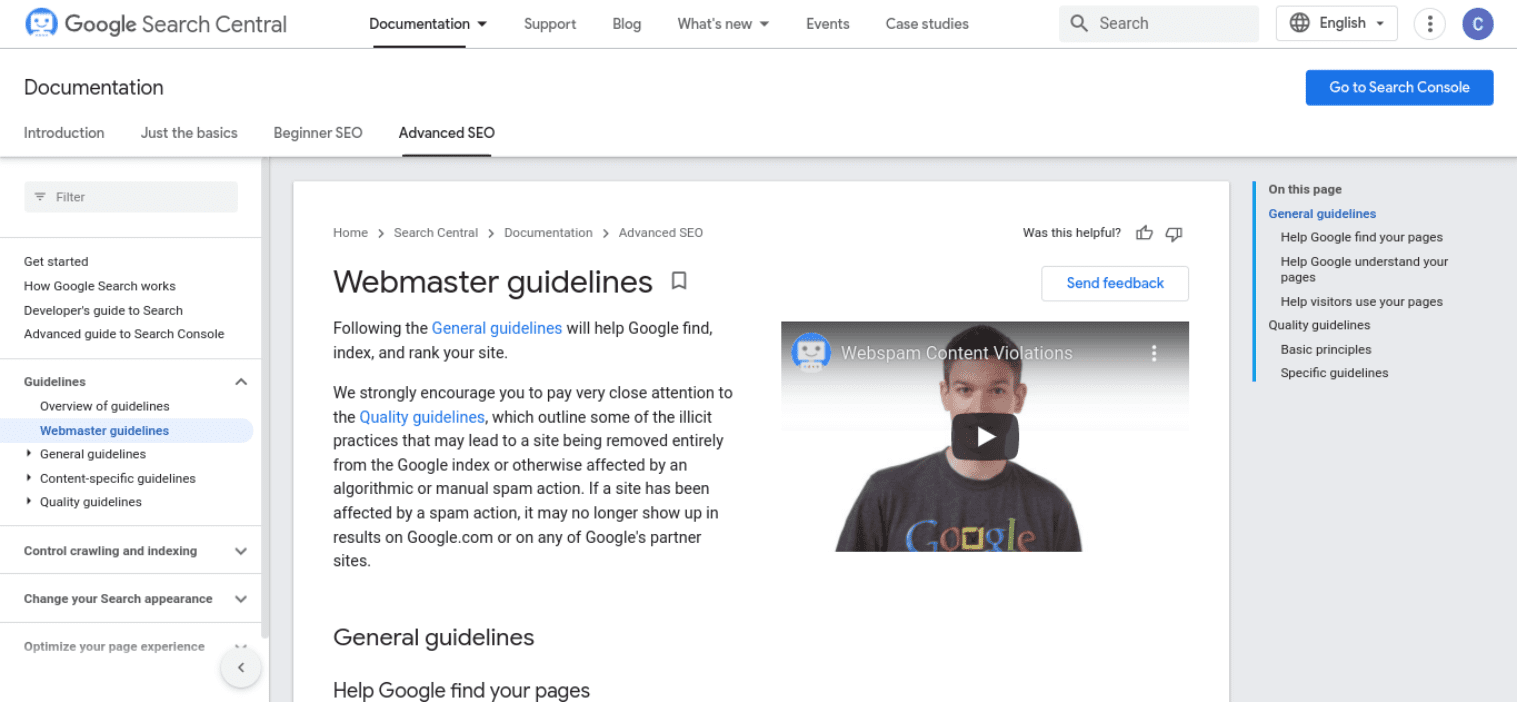
Several harmful practices can get your site penalized, whether you use them knowingly or not. One of the most common tactics is keyword stuffing. Users litter their content with the same keywords to gain the top spots in the Search Engine Results Pages (SERPs). This practice makes the content hard to read and lowers the usefulness it has for readers, often to the point of incomprehensibility.
As you probably already know, search engines such as Google use algorithms to deliver relevant content to users based on their search queries. These search algorithms are constantly updating and improving. And that means they’re also getting better at detecting black hat SEO tactics like keyword stuffing and other spammy behavior.
A Google penalty normally leads to a significant drop in your rankings. Alternatively, the search engine may delist your website from the search results entirely. This scenario typically happens when an algorithm update identifies bad SEO practices on your site.
While it’s possible to get back into Google’s good graces, it takes a lot of work to recover from a penalty. It is much easier and better to never get into that position at all. Therefore, it’s best to learn about black hat practices so you know how to avoid them altogether.
10 Black Hat SEO Techniques to Avoid
As we have just discussed, using devious tactics to climb to the top spot in Google can result in a penalty. Even if you use them inadvertently, bad SEO practices can harm your rankings and decrease the chances of users discovering your website. With this in mind, let’s look at the most common black hat SEO techniques and how to avoid them!
1. Keyword Stuffing
As mentioned earlier, keyword stuffing involves filling up a page with the phrase you want to rank for. While keywords help search engines understand what your content is about, overusing them can land you in trouble.
Here’s what keyword stuffing might look like:
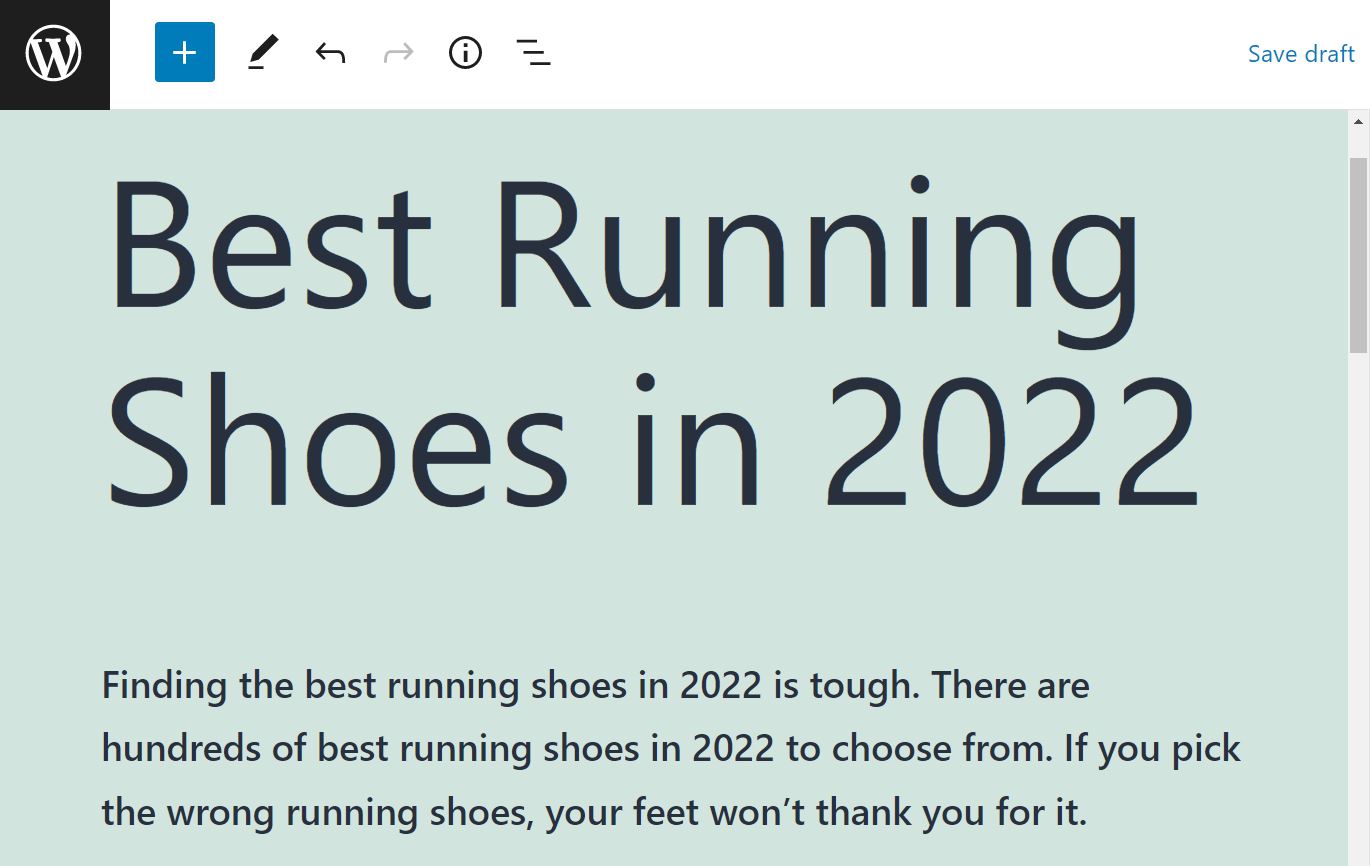
As you can see, using the same terms repeatedly can make your text sound unnatural. It can also make your site look spammy (because it is).
Search engines are very good at detecting keyword stuffing, and they penalize offenders by not displaying their content. Therefore, you’ll want to use keywords moderately and naturally. We recommend using an SEO plugin such as Yoast SEO or Rank Math to monitor your keyword usage:
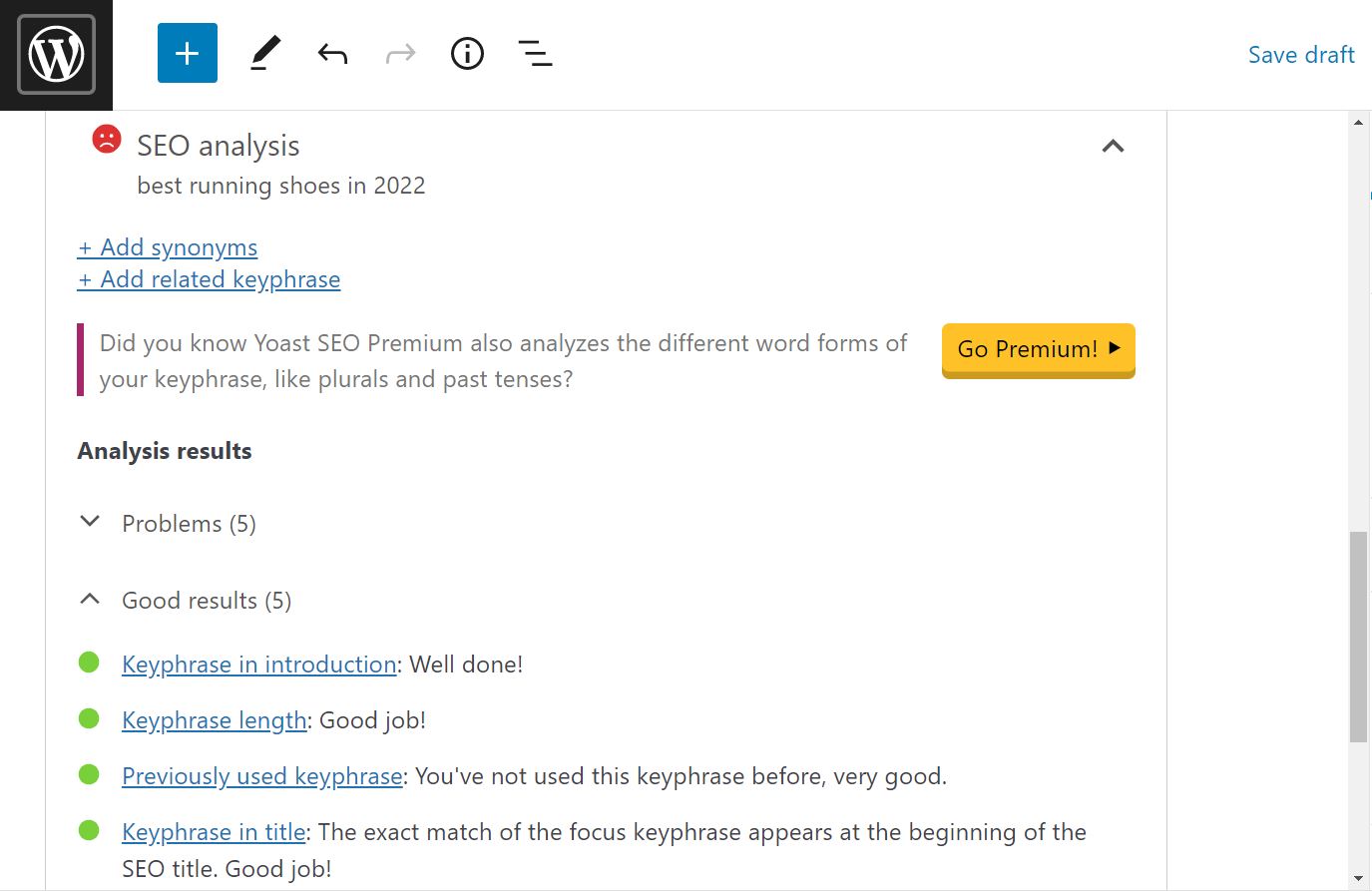
Besides giving suggestions for optimizing your website, Yoast also tells you if you’re overdoing your SEO. For example, it measures your keyword density in a post. It also notifies you if you’ve already used that same search term on another page.
2. Buying Backlinks
Search engines also use backlinks to rank your content. If Google sees there are a lot of external websites with URLs to your posts and pages, it will deem you an authoritative and trustworthy source. This can help boost your rankings in the SERPs. Some users take advantage of this ranking signal by selling link placements on their sites. In this setup, other site owners can pay to have a site owner place a backlink to their content.
However, if someone sells these links to many users, search engines might mark their site as spam. Moreover, buying links goes against Google’s Webmaster Guidelines, and you may receive a penalty for doing it.
Fortunately, there are better ways to build backlinks to your site. For instance, you could write guest posts for other websites and include a relevant URL to one of your posts. You can also work with other bloggers on collaborative articles, reach out if you notice a broken link on a site to suggest yours as a replacement, and so on.
3. Article Spinning
Another thing to watch out for is article spinning. Similar to plagiarism, this practice involves copying posts published on other websites. Spinning means reusing the same ideas and rewording entire paragraphs. Some writers may even use AI-based paraphrasing tools to churn out articles for their blogs.
However, it’s important to note that Google penalizes duplicate or copied content. Moreover, some publishers might take legal action against users that plagiarize their content. (It is literally stealing copyrighted material.)
Of course, it’s almost impossible to write about topics that no one else has covered yet. Whether you’re writing a post about the best SEO techniques or must-see attractions in Paris, there are likely already dozens of articles with the same suggestions.
Therefore, you’ll want to make sure that you write articles using your own voice. You could also improve your own existing posts by providing additional ideas and using original photos. Reworking your own content and updating it can get much better SERP rankings than stealing someone else’s.
4. Misuse of Schema Markup
Schema markup enables search engines to better understand what your content is about. When you add this code to your site, you get rich snippets of your pages in the SERPs:

Rich snippets are search results that contain additional information, such as product ratings and prices. These snippets tend to have higher Click-Through Rates (CTRs) than standard links. Therefore, adding schema markup to your pages can help boost your organic traffic and conversions. You can easily add this markup to your pages and posts with a WordPress schema plugin.
However, you don’t want to overdo it. Trying to cram a lot of keywords in your schema markup can get you penalized. Moreover, some website owners may try to fool users by providing inaccurate information. For example, a seller might post fake product reviews and add structured data to display these positive ratings.
This sort of data abuse can harm your rankings. Therefore, we recommend following Google’s rich snippet guidelines when optimizing your content.
5. Webrings or Private Blog Networks
Webrings, or Private Blog Networks (PBNs), are groups of websites that link to each other. They are designed to build domain authority and boost each site’s rankings in Google.
For example, you might create five travel blogs, each one focusing on a specific niche or topic. Then, you may regularly add links to and from these sites when writing posts.
This method may seem like an easy way to build backlinks. And it used to be! However, PBNs violate Google’s Webmaster Quality Guidelines and may result in ranking penalties. A few years ago, Google took direct action against PBNs, and if the search engine thinks your content is part of one, you will have a huge hole to dig yourself out of.
It’s fine to link to your own content from other sites you own, of course. But you want to make sure it’s not a huge cluster of similar websites that only funnel traffic between themselves.
As mentioned earlier, there are more ethical ways to get links to your site. For instance, you can contribute original posts to third-party websites. Moreover, if you have many high-quality articles on your site, other bloggers will willingly link to your posts within their content because they provide value on their own.
6. Blog Comment Spam
You may already be familiar with comment spam if you run a blog. Sometimes, users post comments that contain links to their pages. The aim is to build free backlinks from many different sites:
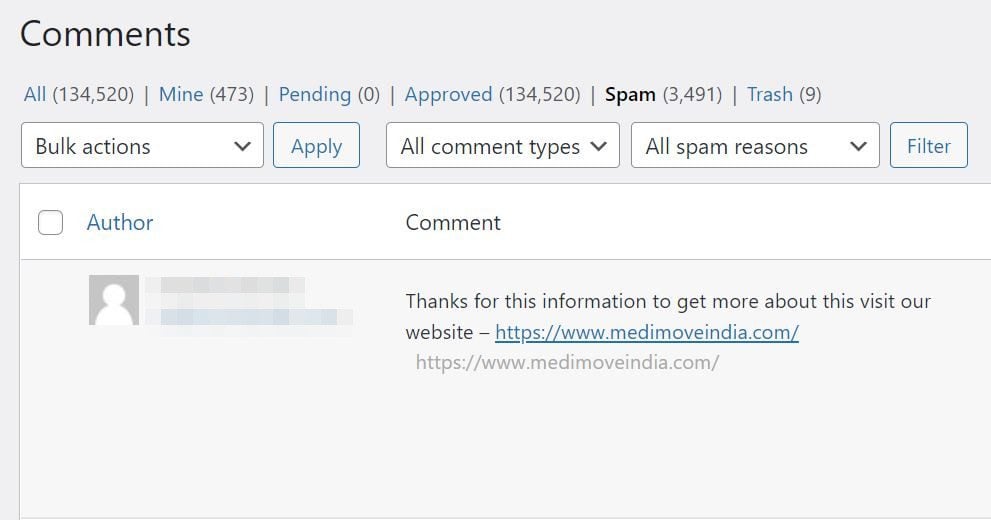
While this technique can be effective, some website owners may simply mark your input as spam and ban you from posting. Therefore, you’ll want to avoid commenting on an article just to link to your site.
Instead, you’ll want to make sure that your contribution is meaningful. For instance, you could share a tip or suggestion, then link to a relevant post that users might find helpful. Some blogs even keep their blog comments marked as nofollow to prevent this, discouraging people from leaving these kinds of comments because the site owner has asked search engines to ignore them.
Spam comments on your website can also harm your blog. They make your site look unprofessional, which can damage your reputation. You might want to set up a comment moderation system to filter out spammy content. Akismet is a basic one to get you started if you’re a WordPress user.
7. Hiding Content
Perhaps one of the most devious black hat SEO tactics is hiding content on your pages. This practice involves concealing certain text and links by making them the same color as the background so users can’t see it, but search engines will.
Here are some other common tactics for hiding content:
- Placing it behind an image
- Using a font size of 0
- Adding a class name to an element on your page and setting it to “hidden” in your CSS stylesheet
People typically use this technique to stuff a page with keywords and boost its rankings while hiding the content from users. However, just because a person can’t see it doesn’t mean robots can’t. Search engine algorithms are not easily fooled. Your website might get penalized for cloaking elements and filling up pages with irrelevant content.
And even if the hidden content is relevant to the post, you can get knocked for attempting to keyword stuff (or worse).
8. Sponsored Pages and Posts
If you’re a blogger or content creator, you may be approached by brands or websites that offer you a gift or monetary compensation in exchange for a link. Sometimes, they may even ask to place an entire post on your blog that contains a URL back to their site.
However, Google considers these link schemes as bad practices. Therefore, it’s crucial to disclose any sponsored links on your site. You can do this by using the nofollow or sponsored attribute:
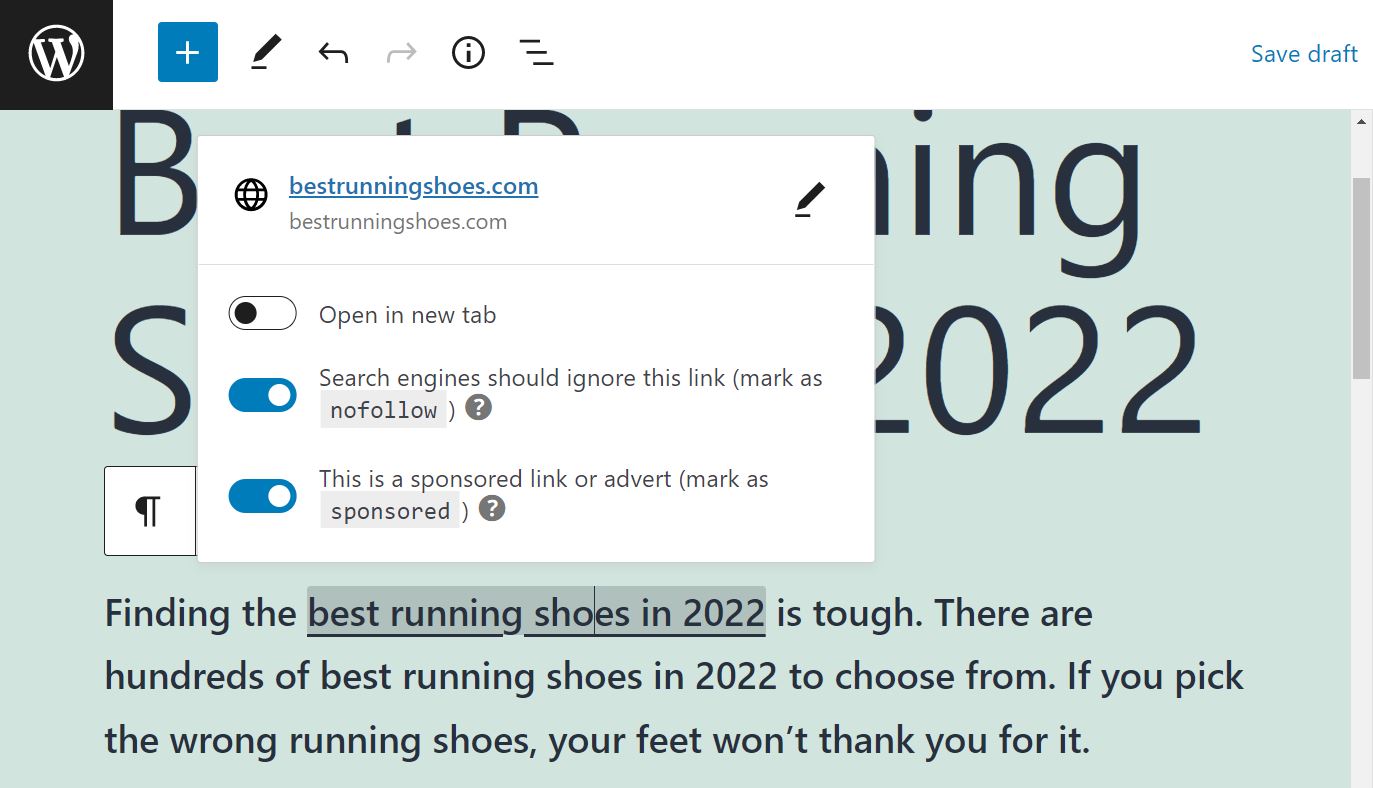
These attributes tell search engines to ignore those links when ranking your page. This way, Google won’t associate your site with the linked page or crawl it from your website. Your readers still get the value of the sponsored content, the buyer gets the brand awareness, but you aren’t being penalized by Google and other search engines for having what might be shady business practices.
This is very close to buying backlinks, as we mentioned above, but goes deeper because they’re not only buying a single link — they’re buying your entire audience’s attention.
9. Cloaking
You may have heard of cloaking before. This technique can take many different forms, and it is very different from hiding content on any given page. In SEO, it refers to displaying different content to users and search engines.
One of the common cloaking methods is serving a page of HTML text to search engine crawlers while showing a page of images to human users. Another example is serving users with JavaScript-enabled browsers a different version of the page than people who have JavaScript disabled.
This bait-and-switch is a black hat SEO tactic because users will visit a site expecting X content, and they get there to potentially be bombarded by ads, irrelevant content, malware, insecure site issues, and really anything else the site owner would want to take advantage of. Google and other search engines have protections in place to warn users of site that might harm them, their data, or their devices, but cloaking circumvents that and allows the practitioners to deliver unfiltered (and likely unwanted) content to users.
Google offers several recommendations for making your content accessible without cloaking. Following these guidelines will help you avoid violating the rules on cloaking and accessibility.
10. Doorway Pages
Doorways are websites or pages created to rank for similar keywords and direct users to the same content. For example, a website owner may publish several pages targeted at specific regions that all direct users to the same landing page. A landing page plugin can be used to create these doorway pages quickly and easily, making this underhanded technique appealing.
With this setup, users that look up a particular search query may see several similar pages in the results. When they click on any of these options, they will be redirected to a different (and often unrelated) page. This is different from cloaking because it doesn’t rely on baiting and switching, but instead takes advantage of indexed content and real SEO tactics to funnel users into something unrelated and unwanted.
As you can probably tell, this practice goes against Google’s guidelines and may have harmful consequences for your website. There is no white hat alternative to using doorway pages, so you should avoid this practice at all costs.
Conclusion
SEO is crucial to your site’s growth and success. However, over-optimizing your content or using shady practices can lead to a significant drop in your rankings. Moreover, search engines such as Google may ban and delist your site entirely for engaging in black hat SEO.
Black hat SEO practices include keyword stuffing, link schemes, and article spinning. Google may also penalize you for cloaking content on your pages or manipulating structured data to boost your rankings. Therefore, whenever possible, we recommend using white hat SEO techniques instead and getting your SERP positions the right way.
Do you have any questions about the black hat SEO techniques discussed in this post? Let us know in the comments section below!
Featured Image via Rose Rodionova / shutterstock.com









It’s important to note that search engines continuously update their algorithms to combat black hat techniques and penalize websites that engage in such practices. The risks of using black hat SEO techniques include severe penalties, loss of organic rankings, and even complete removal from search engine results.
I believe that the most important thing is uniqueness. I think Google will reward content writers in this way. No need to use shortcuts such as Black Hat SEO techniques.
What do you think?
Thank you for sharing!
Maggie
Good, i need new ideas and knowhows…
Hi Will
Great article, this is something we should be all aware of. I know we all want to rank high but in the long run it does hurt us. Slow and steady wins the race. Better to do right and slow then to cheat and end up losing all that hard work.
Thanks again for this great post
Have a great day
Hi I dont agree with a lot in this article.
Comments work.
Paying for links on other websites works.
How do I know I’ve been doing it for 10+ years and have 50+ websites top of google.
I’ve found that my competitor had bought backlinks. I was using MOZ to analyze his content and discovered over 1000 backlinks to an article about most trust websites to buy t-shirts. All those links were spam over different blogspot domains. I have alerted Google about a week ago but my competitor still ranks 1st page for the spammy backlink keyword he choosed.
Maybe I have alerted Google using the wrong method? It would be awesome if you could share with us what can be done to fix it! 🙂
Hi Rodrigo,
You can report spammy content and paid link schemes on this page: https://developers.google.com/search/docs/advanced/guidelines/report-spam
With my years of experiencie, hiding or cloaking are the worst things you can do. PBNs are still cool, if you work with private people you know a make a community.
Great post! thanks!
That’s true. It’s a good distinction about working with others within a community to interlink versus being a single entity gaming the system.
Will Morris, you really explained all the ten black hat SEO techniques in detail. Thanks for such valuable article which is very important to do SEO for any website. No doubt white hat SEO plays important role to get higher ranking in the various search engines but it is as much important to know about black hat SEO to avoid search engines penalty.
You’re welcome, Vikas 🙂
I was researching about Blackhat SEO a few days ago trying to know more about it. I just came to your website today only to find out it is also part of you guy’s recent blog posts. This article is so insightful. Thank you.
Hi Will, Thank you for this article, I do have a query… I was thinking of adding a resources page to my clients websites giving them easy access to my site training area, articles quick tips and contact details. Would something like this constitute a black hat seo link? I am wanting it to serve a purpose for them as well as a back link to my own site. But I’m now thinking this may not be wise? I would love your thoughts. I have been told that the small footer link doesn’t constitute a back link. Is that true?
Hi Clare,
That shouldn’t be a problem – however, you might want to avoid linking excessively from the same website. Also, footer links often get devalued, so you might want to link to your site/articles from the main body of the page.
Thanks for a great article! Is there no way to use PBNs in a white hat way?
And is article spinning also a problem if it’s a unique article I use on multiple sites with pinned variations?
The closest thing I’ve seen for doing PBNs in a somewhat okay “grey hat” manner is having a couple of other platforms you write on, such as Substack and Medium, that you can then use as vehicles for contextual links back to your primary site.
And if it’s your own content on spinning, it’s much less of a problem. You can’t plagiarize yourself. However, you can run into potential duplicate content issues there, so be sure to check out our recently published guide on that to be sure you’re in the clear: https://www.elegantthemes.com/blog/wordpress/ultimate-guide-to-duplicate-content-seo
Thanks for your response! I created a PBN about a month ago but seems like I shouldn’t focus my energy on that anymore. My goal with the pbn was better ranking on my YouTube Videos and website SEO but if it’s likely to penalize me, I’d rather focus my energy elsewhere…
Thank you! A great list of very common practices that unfortunately I, and many of my clients come across in the race to be ‘top of the pile’. It can be difficult to convince someone to spend time and effort writing actual content of value when they see that they can spend money and get there more quickly – but I will definitely be sharing your article to highlight the pitfalls of such actions. Sometimes it helps when it comes from another source and not just me banging on about it 😉
It’s really unfortunate that mentality is so common. I totally understand why the client would want to try to race to the top using practices like this, but the short time they’re there is far outweighed by being banned and deranked from Google forever. Hopefully they’ll listen from now on! And hey, maybe it’ll be a few more billable hours for you for content creation using white hat techniques, too, haha!
Absolutely! Quick fixes don’t usually work out in the long run do they?! And I will definitely be promoting the content creation side of things more too – thanks for the White Hat article too 😉